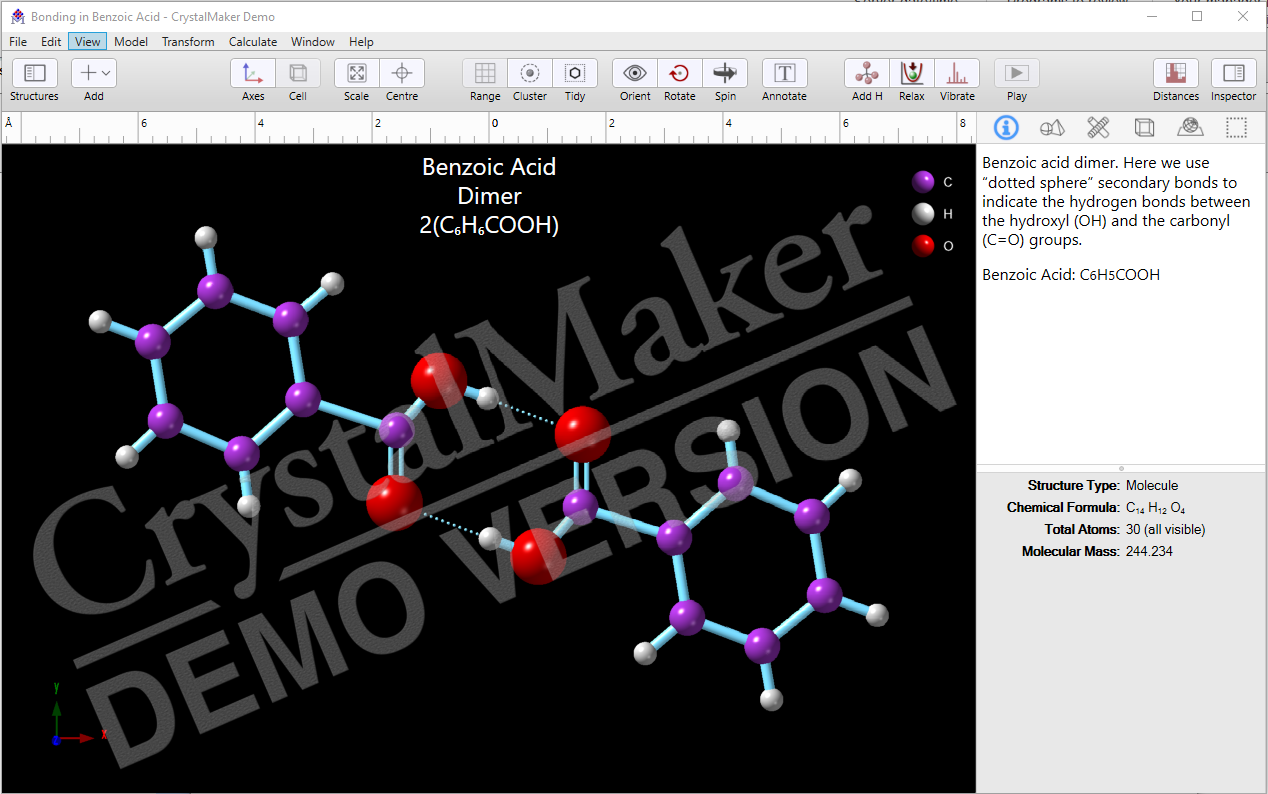

- VIEWING MULTIPLE UNIT CELLS IN CRYSTALMAKER SOFTWARE
- VIEWING MULTIPLE UNIT CELLS IN CRYSTALMAKER WINDOWS
All our Mac code is developed exclusively in Apple's "Cocoa" environment, resulting in 100% pure native Mac code.Īs a result, our software integrates perfectly with your operating system, delivering the best performance and a joyful user experience. We are registered with Apple as Mac developers and use only official developer tools and application programming interfaces (APIs). We believe Mac users deserve better, and so we do things properly.

This begs the question: why go to all the expense of buying a Mac, only to spend your valuable time working as a second-class citizen? Think Different And the internet is littered with abandoned software projects like these. The result is poor performance and a weird, non-standard (and often diabolical) user interface.Īnd as for compatibility? Well, you're trusting that both the software developer and the developer of the emulator is going to stay in business (and/or funding) long enough for you to get some useful work done. They work against the system, not with it relying on translators all the way. These programs use "lowest-common-denominator" designs ("jack-of-all-trades, master-of-none"): you can get some things done, but nothing is done well.
VIEWING MULTIPLE UNIT CELLS IN CRYSTALMAKER WINDOWS
The problem is that many scientific programs that "run" on the Mac aren't really Mac programs at all they are ports of Windows or Linux programs that are emulated on the Mac, using third-party utilities such as Qt, wxWidgets or Java. When it comes to independent Mac software, developers can take advantage of Apple's hard work to create elegant, intuitive and efficient applications - or at least, they can if they do it properly. Why do Mac users love their computers so much? It's partly due to the hardware and software integration: making usability so much easier and more intuitive. Screen overlays - ruler, protractor and grid - provide high-precision measurement of observed diffraction images, including the option of intensity profiles (2D cross sections) using the Ruler overlay. Image colourization - including impressive gradients - can be applied with custom threshold levels to enhance visibility. SingleCrystal 4 features advanced image processing for observed diffraction images. An integrated Reflexions List lets you search for, browse and sort simulated reflexions, filtered by visibility and/or type. Screen tools provide interactive distance and angle measurements for simulated patterns, with haptic feedback (Mac): literally "feel your reflexions". Expanded popovers are shown for the Rotation Dials (second from top), View Directions (third from top) and Saturation (bottom). The default layout (top) includes view direction and rotation dial popovers, rotation and zoom buttons and a saturation popover. Includes a CD-ROM with CrystalMakerTM data files to allow the reader to view and manipulate the structures on both Windows and Macintosh platforms.Examples of different Touch Bar layouts, available for MacBook Pro. Presents a general system using simple notation to reveal similarities and differences among crystal structuresĭepicts more than 300 selected and prepared figures illustrating structures found in thousands of compounds Understandable by anyone concerned with crystals or solid state properties dependent on structure The bundled CD-ROM, which uses CrystalMaker for instruction and demos on both Windows and Macintosh platforms, allows the user to manipulate the structures. Insight into crystal structures, including some complex silicates, is aided by the use of the CrystalMaker computer program. Early chapters provide an introduction to crystal structures and symmetry for readers with a variety of backgrounds. It is easily understood and used by those concerned with applications dependent on structure-properties relationships. Structure and Chemistry of Crystalline Solids presents a widely applicable system with simple notation giving important information about the structure and the chemical environment of ions or molecules. Most chemists, metallurgists, mineralogists, geologists and materials scientists need a simple system and notation for describing crystal structures. Crystallographers have an elegant system using definitive notation for describing crystal structures, but it does not serve as well the needs of many others working with crystalline solids.


 0 kommentar(er)
0 kommentar(er)
